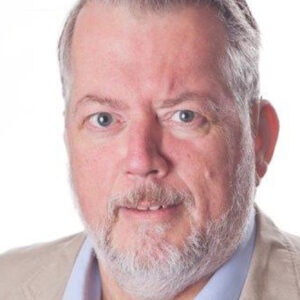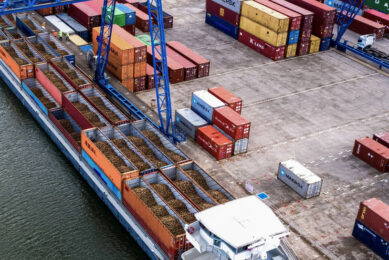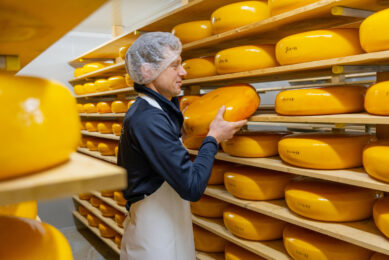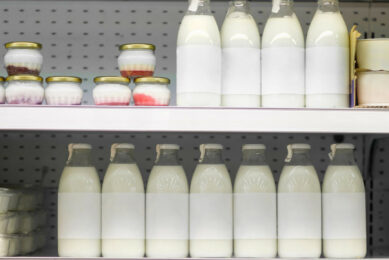Building a new Jersey barn seems to be challenging
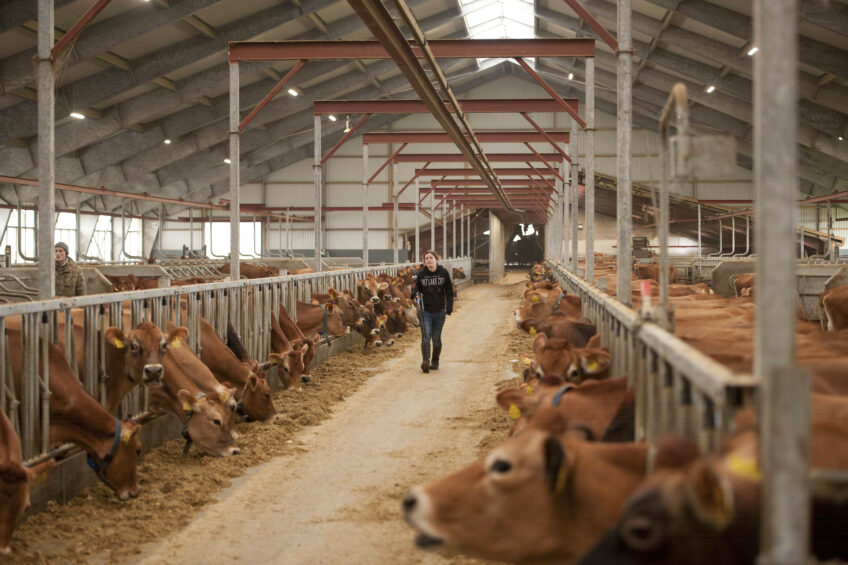
Carsten Asmussen is a real cow-man. He is very shrewd, but not an entrepreneur who operates on a razor’s edge. He prefers to work with people he trusts. Therefore, he finds it difficult when he feels betrayed. Building the new stable was not easy or fun, but rather a disappointment.
The new barn was made one size bigger than initially planned. The farmer aimed for an expansion of the barn from 130 to 300 dairy cows and 350 heifers. The construction draftsman was overexcited and came, based on the wishes of the farmer and his wife, with a plan for a farm with 400 cows and 460 calves.
“We had €300,000 (over DKR 2 million) of our own funds. The bank said okay, so we went along with the expanded version of our plan.” The town ultimately permitted the construction, six years after the first planning. Therefore, the farmer had to pay more than €24,000 (180,000 DKR) for municipal taxes. “A few months after we got the license, this particular tax was abolished.” The farmer is still angry about that. He is also disappointed with the slow settlement of promised subsidies. The first investments in the new barn, which eventually cost €2.8 million (DKR 20 million), were already made in January 2015. In early 2017, not a dime of the subsidies were paid out. Fortunately, he can finance €200,000 (DKR 1.5 million) within the family. “So we should economise. Despite the current good milk prices, we won’t buy a new tractor.”
Energy is expensive in Denmark
The new barn is carried out with a 2×16 Delaval rapid exit. “We considered milking robots, but feared the dependence on service, the high cost of maintenance and high energy costs.” Energy is expensive in Denmark. The farmers have just signed a new contract at a price of €0.112 (0.8 DKR) per kWh at a consumption of 500 kWh per day. This price is about twice as high as in the Netherlands for example. “And on top of that, the energy prices are under pressure now from an increased supply from Norway.”
The new barn was put into operation in September 2015. The parlour has been already adapted, just a few months after the start-up. The size of the cow places proved too cramped for Asmussens Jersey cows. “Delaval has corrected it without costs, so that was very nice.” Asmussen is still searching for the reason why the cows do not come into the parlour so smoothly and why they have difficulties with the milk let-down in the new parlour. For this reason, already a dozen cows were sold. “Probably there is a current leakage somewhere. Whoever solves that problem for me, I’ll be happy to pay €12,500 (DKR 100,000).”
Other construction issues
Asmussen expects that the problems of the new parlour will be settled in time. What gives him the greatest headache is the settling of other construction issues, like the one he has with one of the six sub-contractors who was responsible for the LED lighting. “The contract states that there would be 188 lux at animal level. At 170 lux, I would not even complain, but it turns out to be less than 80 lux in a still clean, new barn. And this mistake was not corrected in as nice way such as Delaval did with the cow places. We can have a lawsuit, and I have no appetite for that at all. These kinds of issues makes this the last building I will ever build. If my daughter wants to make a further growth step, she has to arrange it all by herself.”
Focus on housing young stock
The focus is now on the conversion of the old cow shed housing for young cattle. The manure pits are ready; the latter construction activity will be over sometime this February. Then the farmer wants to head for 400 dairy cows as soon as possible. “Under the current milk prices, the return-on-investment in additional cattle will be within six months,” says Asmussen.
Purchasing cattle creates a risk of introducing diseases, the farmer is well aware of that. “But Denmark is free of most diseases, and farms have clear health statuses.” Purchasing some 50 cows, however, was cancelled at the last minute after a supplier warned him that the selling company had a Salmonella outbreak in 2014. Blood samples were taken from all cows, some were positive. “Ultimately, the sale was cancelled. The farm’s health status was lowered and animals may only be shipped from this farm to an abattoir.” That experience, however, does not make Asmussen shy of purchasing cows. “I will probably buy cows from multiple herds.”
Top Jersey breeder
The Dane, one of the country’s top milkers, wants to refocus after breeding expansion. In 2012, he spearheaded the national lists of Jersey-producers. Due to construction troubles and divided attention, he fell a few places, but Asmussen wants to reclaim the top position. That also brings a lot of money. The sale of breeding stock is more about efficiency than milking the cows. “Not the production but the money counts,” says the skilled breeder.
And he does make a profit on his cattle. Only a few animals end up at the butcher, in 2016 only four. The rest are usually sold to other farmers as a second or third lactation cow at seven months pregnant. They bring in around €1,350 (DKR 10,000, Dec 2016) due to the high demand for livestock by improving milk prices. The regular price is approximately €1,075 euros (DKR 8,000). That is much higher than the slaughter value of only €350 (DKR 2600) for his heavy Jerseys. “The first lactation covers the rearing costs, the following lactations for me and the bank,” said the farmer. The ultimate sales by the farmer were done in 2014, the last year with a normal herd of 130 cows; the revenues topped €103,000 (DKR765.000) or around €800 per cow. This is about three times the average in the Netherlands.
92% of calves are heifers
In 2016, the farmer used only sexed semen. That reduces the production a little. On average, the older cows need more than two inseminations, over the whole herd it is an average of 1.7. It gave many heifers: more than 92% of all calves. Rearing costs are relatively low because the company has a lot of land, partly due to renting 100 hectares. Most of this rent is on five-year contracts with an annual rent of € 740 per hectare (DKR 5,500). There is already sufficient land for spreading the manure plus fodder production for the proposed 400 dairy cows. Part of the excess roughage was sold in recent years as high energy maize for manure digesters in the northern German state of Schleswig Holstein, a distance of some 60 km. Sales of corn realised a turnover of more than €100,000 (DKR 800,000) per year. “2016 was a record year for the corn production in this region. The yields of our own fields averaged 102 tonnes, 25 ha of rented land came to an average of 75 tonnes of product.”
Back on track
The farmer will use the structurally good returns to bring the financial position back on track. He strives for a financing of up to 60% of the farm value. This will bring the total financing under Realkredit Danmark, at an interest rate of 2.5% and soft repayment terms. At the moment, surplus financing of around €300,000 (DKR 2.1 million) is borrowed from commercial banks at 3.5%. “I want to be out of their grasps as quickly as possible, considering their interaction with Danish farmers in difficult times.”
Biography
Name: Carsten (48) and Helle (45) Asmussen.
Location: Christiansfeld, Denmark
Company: 265 Jersey dairy cows and 310 heifers on 280 hectares, of which 100 ha is rented. There is 90 hectares of corn, the rest is mainly grassland. The average production is 8,636 kg with 5.98% fat and 4.07% protein. This gives 869 kg of fat and protein per cow per year. The average cow has 1008 productive days. There are three employees.
Strategy: Rapid growth to 400 cows and 460 heifers and then again fully committed to raising and selling heifers to other dairy farms.
Join 13,000+ subscribers
Subscribe to our newsletter to stay updated about all the need-to-know content in the dairy sector, two times a week.






